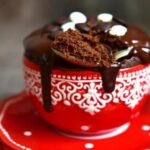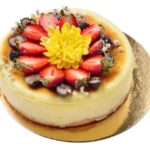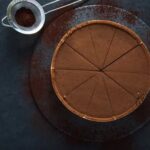When it comes to decorating a cake, butter icing is a go-to choice for many bakers and decorators. Its versatility, smooth texture, and decadent flavor make it the perfect option to bring your cake to life. Whether you’re a novice or an experienced baker, mastering the art of butter icing can take your cake decorations to the next level.
Butter icing has gained immense popularity in the world of cake decoration due to its ability to create stunning and visually appealing designs. The smooth and creamy texture of butter icing allows for easy application and provides a professional finish to any cake. It effortlessly glides over the surface, creating a flawless canvas for further decoration.
Not only does butter icing enhance the visual appeal of cakes, but it also adds a rich and indulgent flavor. When paired with various flavorings such as vanilla or chocolate extract, butter icing elevates the taste profile of any cake. This combination of aesthetics and flavors makes butter icing an ideal choice for both formal occasions and casual gatherings alike.
In this article, we will explore everything you need to know about decorating a cake with butter icing. From preparing homemade butter icing with just a few simple ingredients, techniques for applying it flawlessly onto cakes, adding flavors and colors, creating intricate designs, incorporating it with fondant decorations, troubleshooting common issues, all the way to expert tips for successful cake decoration – we’ve got you covered.
Get ready to unleash your creativity and transform your cakes into edible works of art using the versatile medium that is butter icing.
The Basics of Preparing Butter Icing
Butter icing is a versatile and delicious option for cake decoration. Its smooth and creamy texture adds an elegant touch to any cake, while its decadent flavor enhances the overall taste. Preparing homemade butter icing is simple and allows for customization in terms of consistency and flavor.
To make butter icing, start by gathering the necessary ingredients – butter, icing sugar, and any desired flavorings such as vanilla extract or lemon juice. In a mixing bowl, beat the softened butter until creamy. Gradually add in the icing sugar, mixing well after each addition. This will create a smooth base for your icing.
To achieve the perfect consistency for spreading or piping, adjust the amount of icing sugar accordingly. For thinner consistency, add a splash of milk or cream to soften the mixture. If the icing becomes too runny, add more icing sugar until it reaches the desired thickness.
In terms of flavorings, options are endless when it comes to butter icing. Experiment with different extracts like almond or mint for unique flavors. Additionally, consider incorporating natural ingredients such as cocoa powder or citrus zest to add depth to your butter icing.
Once you have achieved your desired consistency and flavor in your butter icing, it is time to apply it to your cake using various techniques. Before applying the butter icing, it is crucial to crumb coat the cake by spreading a thin layer of frosting over the entire surface. This seals in any loose crumbs and provides a smooth canvas for decorating.
When it comes to actual application techniques, there are several options depending on your desired design. Smooth icing creates an elegant finish by using an offset spatula to spread the frosting evenly across the top and sides of the cake. Textured designs can be achieved by creating patterns or swirls with different spatula or fork motions.
For more intricate designs, piping is a popular choice with butter icing. Fill a piping bag fitted with a nozzle of choice with butter icing and apply pressure to create shapes, borders, or written messages on the cake. There are various types of nozzles available that create different designs, such as rosettes or petals.
Techniques for Applying Butter Icing to a Cake
Applying butter icing to a cake requires specific techniques to achieve a professional and polished look. Whether you are a beginner or an experienced baker, mastering these techniques will elevate your cake decorating skills. Here are some essential techniques for applying butter icing to a cake:
- Crumb Coating: Before applying butter icing, it is important to create a smooth and even surface by crumb coating the cake. This involves applying a thin layer of butter icing to seal in any loose crumbs.
Start by spreading a thin layer of icing on the top and sides of the cake using an offset spatula. Then, refrigerate the cake for about 15 minutes to allow the crumb coat to set before proceeding with the final layer of icing. - Smooth Icing: To achieve a sleek and flawless look, opt for smooth icing technique. Start by adding a generous amount of butter icing onto the top of the cake with an offset spatula. Gently spread it in an even layer towards the edges, smoothing out any bumps or air bubbles as you go along. Repeat this process on the sides of the cake until it is fully covered.
- Textured Designs: If you want to add some visual interest or texture to your cake, try creating textured designs with butter icing. One popular technique is called “basketweave,” where you use a basketweave piping tip and pipe vertical or horizontal lines across the sides of the cake to mimic woven baskets. Another option is using different patterned piping tips like stars or rosettes to create unique textured effects.
- Piping: Piping allows you to create intricate details and designs on your cakes using different shaped nozzles and piping bags. This technique is ideal for writing messages, creating borders, or making flowers and other decorations on your cakes. For example, you can use a petal nozzle to pipe delicate flower petals directly onto the cake surface.
Remember, practice is key when it comes to mastering these techniques. Start with simple designs and gradually work your way up to more complex ones. With time and experience, you will be able to achieve professional-looking results that will impress your friends and family.
Adding Flavors and Colors to Butter Icing
Decorating a cake is not just about the appearance, but also about enhancing the flavor experience. Butter icing provides the perfect canvas for exploring different flavor combinations and infusing vibrant colors into your creations. In this section, we will delve into how you can add flavors and colors to butter icing to take your cake decoration to the next level.
Exploring Different Flavor Options
Butter icing offers endless possibilities when it comes to adding delicious flavors. The base recipe typically includes vanilla extract, but you can experiment with other extracts or essences such as almond, lemon, or mint. These extracts not only enhance the taste but also add a delightful aroma to your cake.
If you prefer natural ingredients, consider incorporating fruit purees or zest from citrus fruits into your butter icing. This will give your cakes a refreshing burst of flavor and make them stand out from the crowd. Additionally, spices like cinnamon or nutmeg can be added for a warm and comforting twist.
Infusing Vibrant Colors
One of the joys of decorating with butter icing is the ability to play with an array of colors. Food coloring is commonly used to achieve vibrant shades that match various themes or occasions. Start with a small amount of food coloring and gradually add more until you reach the desired hue.
For pastel colors, use gel-based food coloring instead of liquid ones which can affect the consistency of the icing. It’s important to note that achieving certain colors may require mixing different shades together. Experimentation is key. Remember that darker shades may intensify over time so it’s important to mix them well in advance before applying them on your cake.
Inspiring Ideas for Unique Combinations
The flavor and color combinations are limited only by your imagination. Why not try combining flavors and colors that complement each other? For example, pair a lemon-flavored butter icing with a light yellow color for a zesty and fresh look. Or, opt for a rich chocolate butter icing with a deep burgundy color for an indulgent and elegant creation.
Don’t be afraid to think outside the box and create unique flavor profiles. Experiment with additions like coffee, caramel, or even matcha tea powder for an unexpected twist. By combining different flavors and colors in your butter icing, you can truly personalize your cake decorations and make them one-of-a-kind.
By adding flavors and colors to your butter icing, you can elevate the taste and visual appeal of your cake creations. Exploring different flavor combinations and experimenting with vibrant colors will allow you to unleash your creativity and impress everyone who enjoys your delicious masterpieces.
Creating Intricate Designs with Butter Icing
Butter icing is not only delicious, but it also allows for endless creativity in cake decoration. With its smooth and creamy texture, butter icing can be easily manipulated to create intricate designs that will impress any audience. In this section, we will explore step-by-step techniques for creating stunning butter icing patterns, such as rosettes, petals, and borders. We will also discuss the tools needed to achieve precision and consistency in design execution.
To start creating intricate designs with butter icing, you will need a piping bag and different nozzles. Piping bags come in various sizes and materials, so choose one that you are comfortable using. As for the nozzles, they are available in different shapes and sizes, each creating a unique effect. Test out different nozzle types to find your preference when it comes to design styles.
Before beginning your intricate design work, make sure your butter icing is at the right consistency. If it’s too soft or runny, place it in the refrigerator for a few minutes to firm up. On the other hand, if it’s too stiff to pipe through the nozzle smoothly, add a small amount of milk or water to loosen it up.
Now that you have your piping bag filled with the desired butter icing and fitted with the appropriate nozzle, you are ready to start creating intricate designs on your cake. Here are some popular techniques:
- Rosettes: Start by squeezing out a small dollop of icing onto the surface of the cake while applying gentle pressure. Continue turning your wrist clockwise or counterclockwise while adding more pressure to create swirls around the initial dollop.
- Petals: Hold the piping bag at a 45-degree angle above the cake surface and gently squeeze out small teardrop shapes while moving in a circular motion. Overlap each petal slightly to create a layered effect.
- Borders: Use a star-shaped nozzle to create borders that add a finishing touch to your cake. Hold the piping bag at a 90-degree angle to the cake surface and apply steady pressure as you move along the edge, creating small stars or shells.
Remember, practice makes perfect when it comes to creating intricate designs with butter icing. Don’t be discouraged if your first attempts aren’t flawless. With time and patience, you will refine your skills and achieve impressive results.
| Intricate Design Technique | Description |
|---|---|
| Rosettes | Squeeze and swirl butter icing in a circular motion to create beautiful rosette shapes. |
| Petals | Create teardrop shapes with butter icing, overlapping each one slightly for a layered effect. |
| Borders | Using a star-shaped nozzle, pipe small stars or shells along the edge of the cake for a decorative border. |
Incorporating Butter Icing in Fondant Decorations
Discussing the advantages of combining butter icing with fondant for cake decorations
When it comes to cake decorating, incorporating butter icing in fondant decorations can take your creations to the next level. Fondant provides a smooth and flawless base for intricate designs, while butter icing adds a creamy and flavorful layer that enhances the overall taste and texture of the cake. By combining these two techniques, you can achieve a seamless integration of flavors and create stunning designs that will impress any cake lover.
One advantage of using butter icing in fondant decorations is its ability to provide stability and support to the fondant layer. Butter icing acts as an adhesive, allowing the fondant to stick securely onto the cake surface. This is especially helpful when working with 3D or sculpted cakes that require a firm base for their intricate designs. The butter icing not only holds the fondant in place but also adds moisture, preventing it from drying out or cracking.
Additionally, incorporating butter icing in fondant decorations allows for greater creativity and flavor options. While fondant itself is often described as having a neutral taste, adding a layer of butter icing underneath can infuse the cake with rich and indulgent flavors. With various options such as vanilla, chocolate, fruit extracts, or even coffee flavorings, you can customize your butter icing to complement the flavors of both the cake and fondant.
Step-by-step guide to covering a cake with butter icing and fondant
Covering a cake with both butter icing and fondant may seem like a daunting task, but with proper guidance, it can be achieved successfully. Here is a step-by-step guide on how to incorporate butter icing in fonadnt decorations:
- Prepare your cake: Level your cake layers and apply a thin coat of butter icing as a crumb coat before adding another layer for finishing.
- Chill the crumb coated cake: Place the cake in the refrigerator for about 30 minutes to allow the butter icing to firm up and create a solid base for the fondant.
- Roll out your fondant: Dust your work surface with cornstarch or powdered sugar to prevent sticking. Roll out your fondant into a large circle or rectangle, making sure it is large enough to cover the entire cake.
- Apply butter icing: Using an offset spatula, spread a thin layer of butter icing on top and around the sides of the chilled cake. Make sure it is smooth and even.
- Cover the cake with fondant: Gently lift the rolled-out fondant with a rolling pin and carefully drape it over the cake. Smooth out any wrinkles or bubbles using gentle strokes with your hands or a smoother tool.
- Trim excess fondant: Use a sharp knife or pizza cutter to trim away any excess fondant from the bottom edges of the cake.
- Decorate as desired: Once your cake is covered in butter icing and fondant, you can now proceed to decorate it using various techniques such as piping, embossing, or adding edible accents.
By following these steps, you can achieve a beautiful and professional-looking decorated cake using both butter icing and fondant.
Highlighting the seamless integration of butter icing and fondant designs
One of the key benefits of incorporating butter icing in fondant decorations is how seamlessly they integrate with each other. The smoothness of both elements creates a cohesive look that adds elegance and sophistication to any cake design.
The butter icing underneath provides not only taste but also texture to complement the satin-like finish of the fondant. The two layers work together harmoniously, enhancing each other’s qualities without overpowering one another. This creates a balanced flavor profile while maintaining an aesthetically pleasing appearance.
Furthermore, combining butter icing with fondant allows for endless creative possibilities. The butter icing layer can be used to create dimension and depth in the fondant design, adding intricate details or patterns. Whether it’s delicate lacework, realistic flowers, or personalized messages, incorporating butter icing enables you to achieve intricate designs that would otherwise be difficult using fondant alone.
Troubleshooting Common Butter Icing Issues
Butter icing is a versatile and delicious option for decorating cakes. However, like any other technique, it is not without its challenges. In this section, we will address some common problems that may arise when working with butter icing and provide practical solutions and troubleshooting tips to help you overcome these issues.
One common problem encountered when working with butter icing is melting. This can happen if the temperature in the room or the cake itself is too warm. To prevent this, make sure your cake is completely cooled before applying the butter icing. Additionally, consider refrigerating the cake before and after icing it if you live in a hot climate or have a warm kitchen.
Another issue that may occur with butter icing is separating or curdling. This can happen if the ingredients are not properly incorporated or if they are at different temperatures. To avoid this, ensure that your butter is at room temperature before beating it with the other ingredients. Gradually add in small amounts of powdered sugar while continuously mixing to achieve a smooth consistency.
Sagging is another problem commonly faced when working with butter icing, especially when creating intricate designs or covering larger cakes. One way to prevent sagging is by ensuring that your butter icing has the right consistency. It should be firm enough to hold its shape but soft enough to spread easily. If your icing seems too thin, try adding more powdered sugar; if it’s too thick, add a little bit of milk or cream.
| Common Problem | Solution |
|---|---|
| Melting | Ensure cake and room temperature are cool; refrigerate as needed. |
| Separating/Curdling | Incorporate ingredients properly and ensure they are at similar temperatures. |
| Sagging | Adjust the consistency of butter icing by adding powdered sugar or milk/cream. |
Final Tips for Successful Cake Decoration with Butter Icing
In conclusion, decorating a cake with butter icing can be a truly enjoyable and rewarding experience. With its smooth and creamy texture, decadent flavor, and versatile nature, butter icing is the perfect choice for elevating the appearance of any cake.
By following the basic principles of preparing butter icing, mastering various techniques for application, incorporating flavors and colors, creating intricate designs, combining with fondant decorations, troubleshooting common issues, and practicing patience and creativity, anyone can achieve beautiful and professional-looking results.
One important tip to keep in mind when working with butter icing is to always start with a crumb coat. This thin layer of icing helps to seal in any loose crumbs on the cake before applying the final layer of butter icing.
Additionally, experimenting with different tools and techniques can help add depth and interest to your designs. Whether it’s using a piping bag for intricate details or creating textured designs using spatulas or combs, don’t be afraid to try new things and explore your creativity.
Furthermore, don’t be afraid to experiment with flavors and colors when it comes to butter icing. By incorporating extracts, essences, or natural ingredients like fruits or herbs into your butter icing recipe, you can create unique flavor combinations that will impress your guests. And remember that vibrant colors can easily be added using food coloring gels. Consider mixing different shades together or creating an ombre effect for visually stunning cakes.
Frequently Asked Questions
How do you put buttercream on top of a cake?
To put buttercream on top of a cake, start by ensuring that your cake is completely cooled. Then, prepare your buttercream by beating softened butter in a mixer until creamy and smooth. Gradually add powdered sugar and mix well until the desired consistency is achieved. Place your cooled cake on a flat surface or cake stand and apply a thin layer of buttercream as a crumb coat to seal in any crumbs.
Next, add a generous amount of buttercream to the top of the cake using an offset spatula, and spread it evenly from the center towards the edges. Smooth out any uneven spots or air bubbles with the spatula or a bench scraper, rotating the turntable as needed. Finally, you can add decorative borders or designs with additional buttercream using piping bags or other tools.
How do you ice a cake with buttercream for beginners?
If you’re new to icing cakes with buttercream, there are some simple steps you can follow for great results. First, make sure your cake has cooled completely before starting. Prepare your buttercream by creaming softened butter and gradually adding powdered sugar until smooth and creamy. Place your cooled cake on a rotating turntable if available, as it will make spreading the icing easier.
Apply a thin coat of buttercream all over the cake as a crumb coat, using an offset spatula to ensure an even layer. Chill the crumb-coated cake in the fridge for about 15 minutes to firm up before applying the final layer of buttercream. With additional buttercream, cover the entire cake smoothly by starting from the center and working your way towards the edges while turning the turntable slowly for even coverage. Fix any imperfections using an offset spatula or bench scraper.
How do you ice a cake with buttercream smoothly?
Achieving a smooth finish when icing a cake with buttercream requires some specific techniques. Firstly, ensure that your cake is levelled and chilled before applying icing to avoid any unevenness or crumbling while spreading. Start by adding a thin crumb coat layer to seal in any crumbs, and refrigerate the cake briefly to set it. For the final layer of buttercream, always use more than you think you need to have enough for an even coverage.
Apply a thicker layer of buttercream on top of the crumb coat, starting from the center and working your way towards the edges. Use an offset spatula or bench scraper to smooth out the icing by holding it at a slight angle against the cake’s surface, turning the turntable as needed. Remove any excess icing by continuously scraping off small amounts and smoothing until a desired smoothness is achieved. For an extra polished look, consider using a hot spatula or dipping your spatula in hot water to further smoothen out the buttercream surface.

Welcome to my blog about home and family. This blog is a place where I will share my thoughts, ideas, and experiences related to these important topics. I am a stay-at-home mom with two young children. I hope you enjoy reading it! and may find some helpful tips and ideas that will make your home and family life even better!





